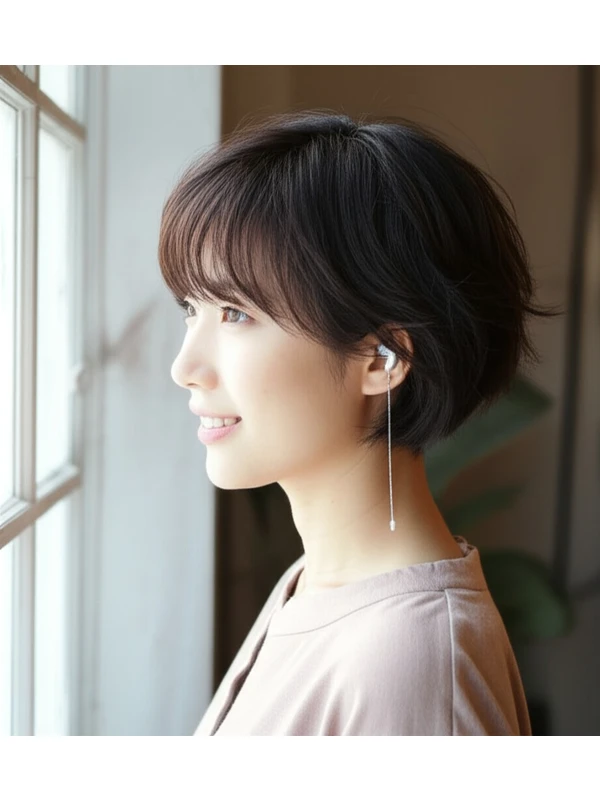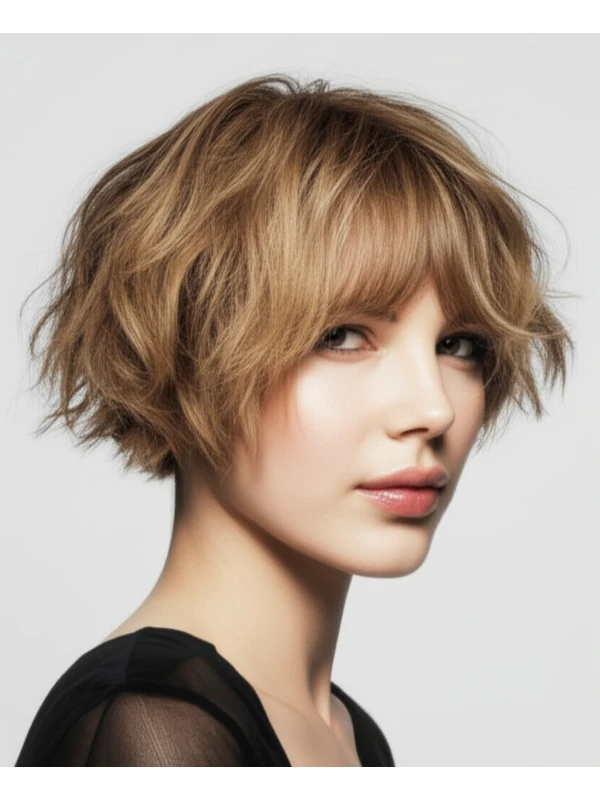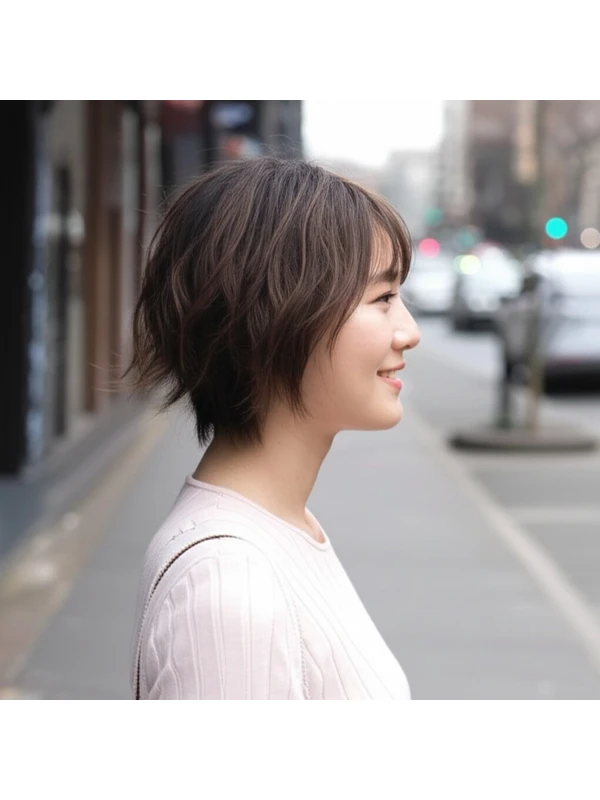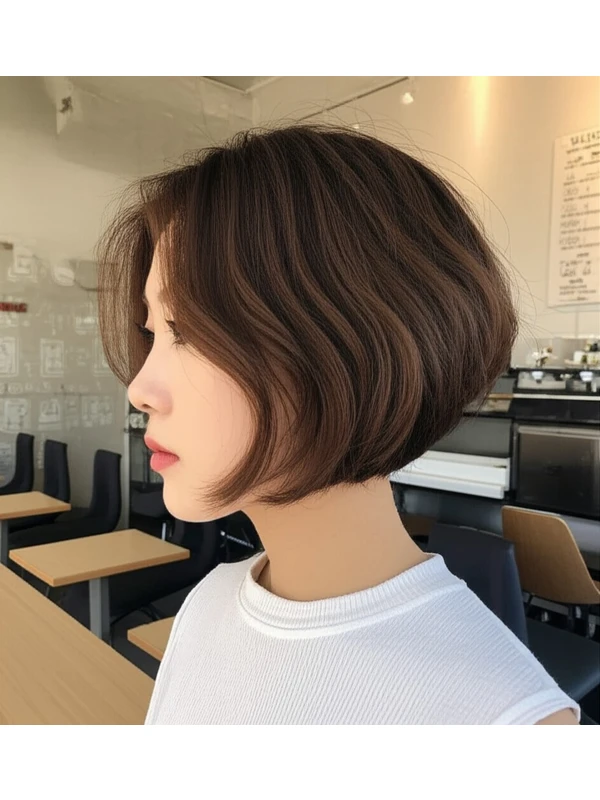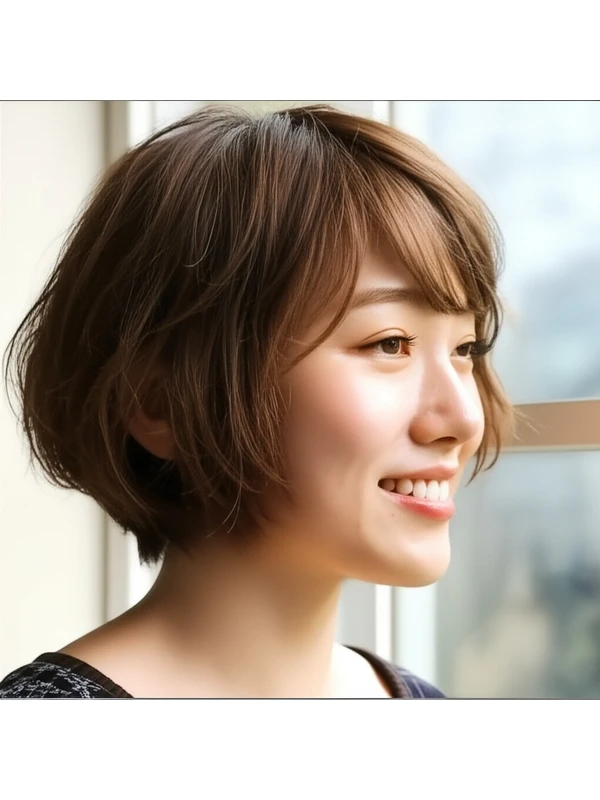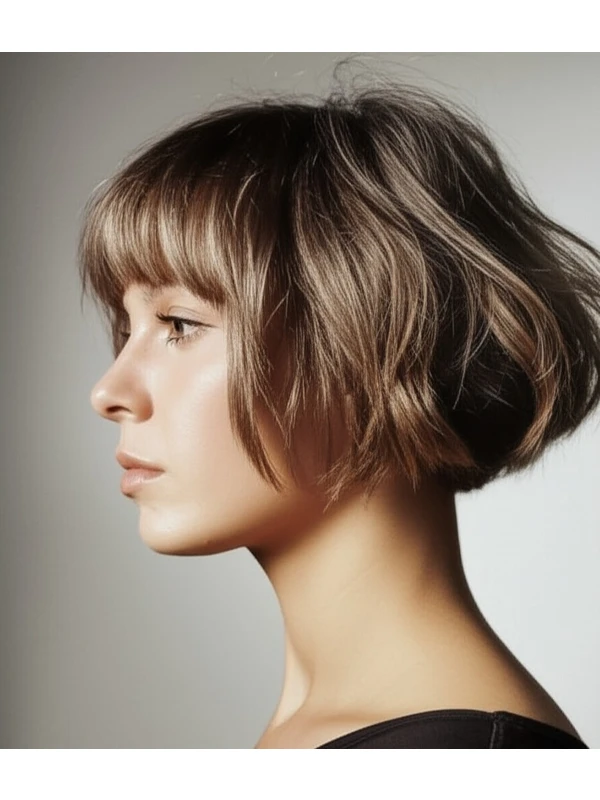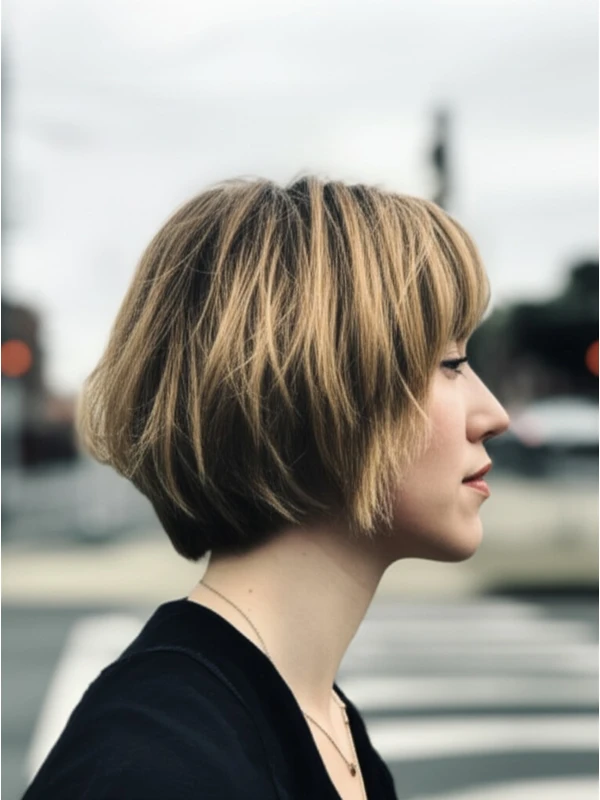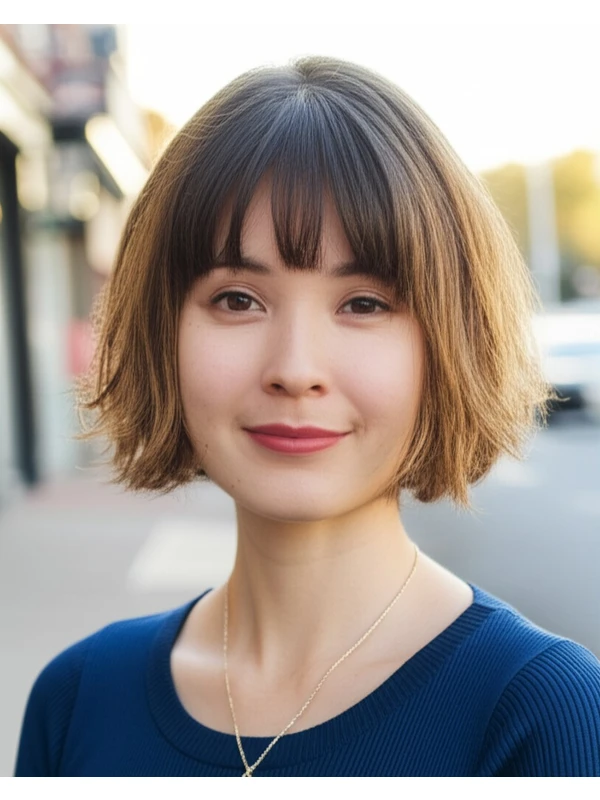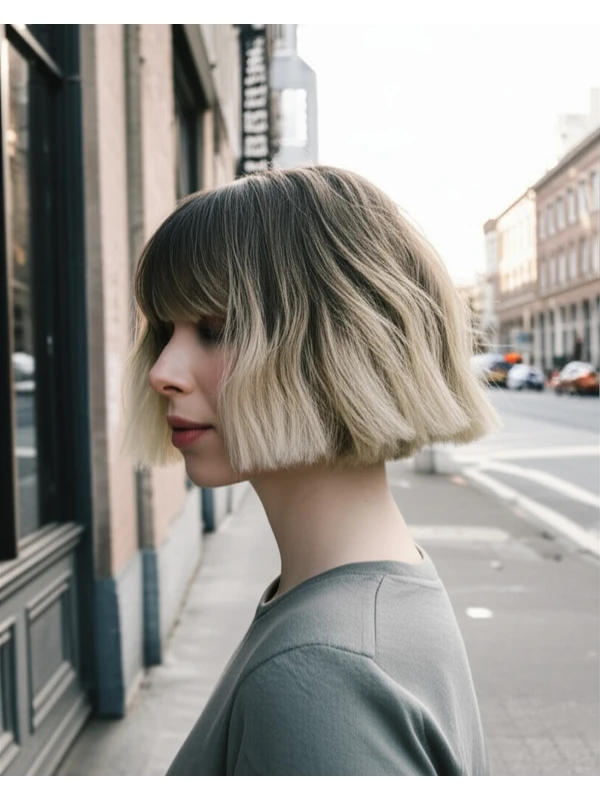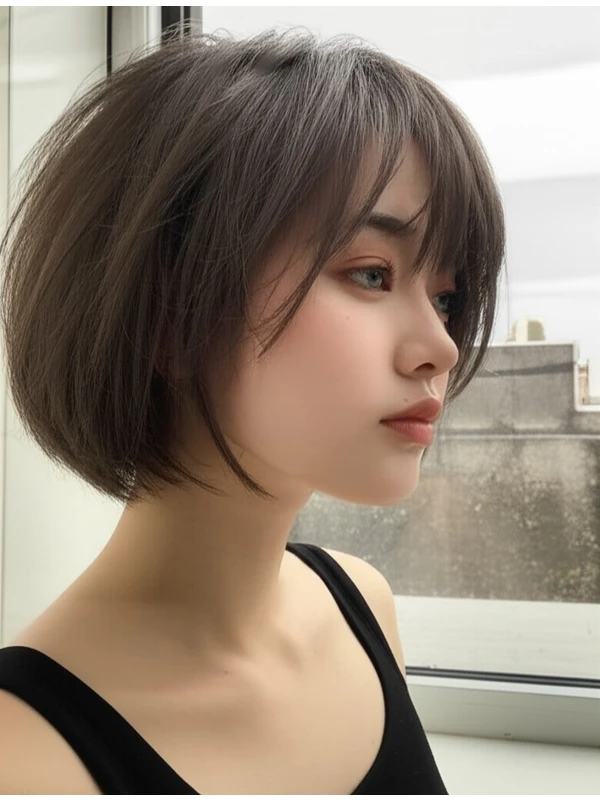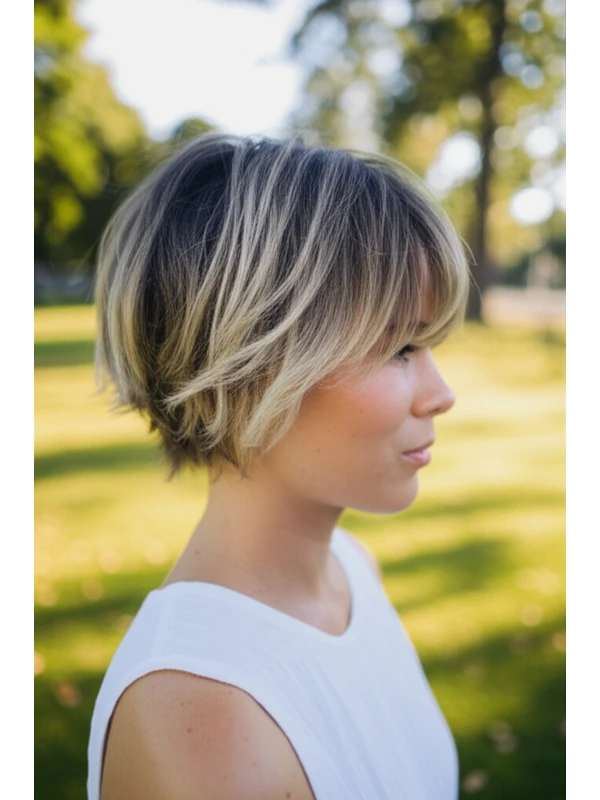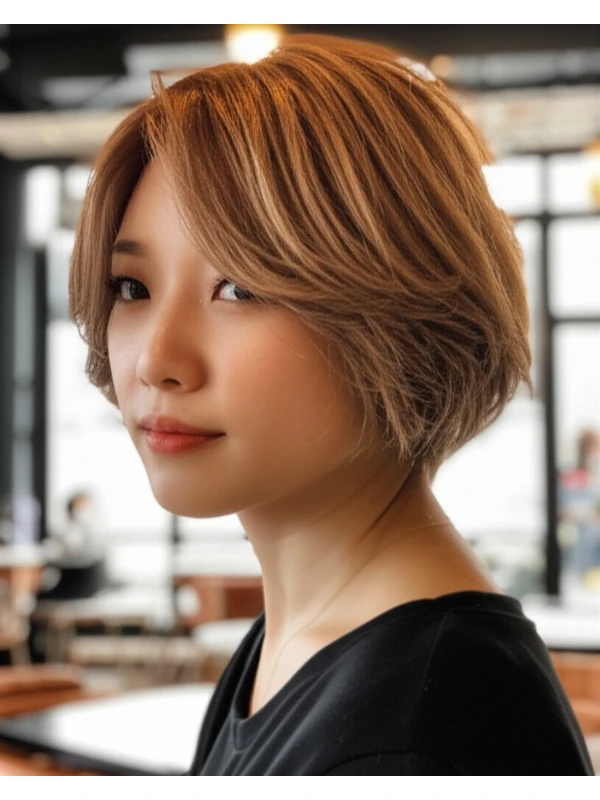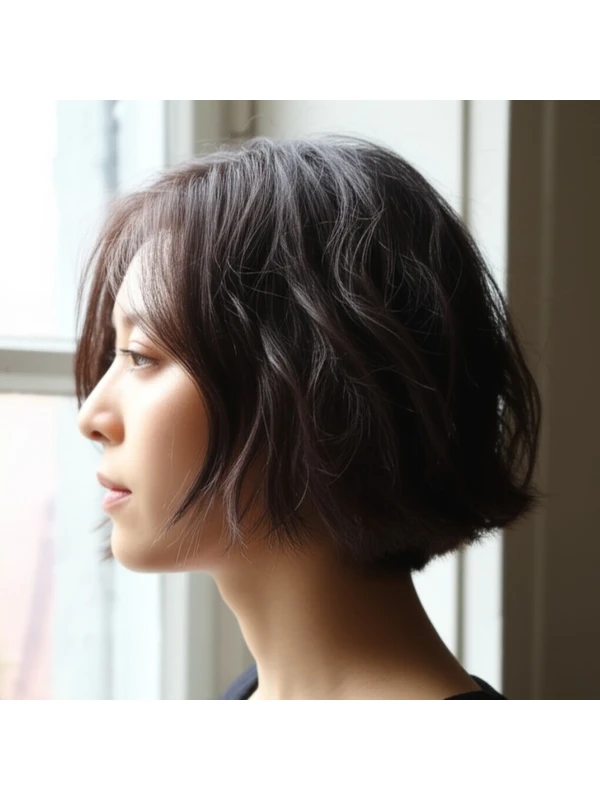#The Classic Bob with Side Bangs: A Style Guide
The bob haircut is a timeless classic for good reason – it’s chic, versatile, and can be adapted to suit almost anyone! This guide focuses on the “bob with side bangs,” exploring everything you need to know to rock this look.
#1) Background & Definition: Understanding the Bob
A bob is generally defined as a haircut where all or most of the hair is cut at approximately jaw-length or shorter. The "with side bangs" variation adds a soft, face-framing element that can dramatically change the overall feel of the style.
- Geometry: A bob's shape can range from blunt and straight to layered and angled. The side bangs contribute an asymmetrical balance.
- Key Features: Clean lines (though texture is optional!), often a defined perimeter, and face-framing side bangs that typically start around the cheekbone or brow line.
- Length Ranges: Bobs can be short (chin length), medium (collarbone length), or long (shoulder length). The "bob" designation usually implies shorter lengths than a “lob” (long bob).
- Alternative Names: Chin-length bob, angled bob with bangs, layered bob with side fringe.
#2) Face Shape Fit: Finding Your Perfect Angle
The beauty of the bob with side bangs is its adaptability. However, understanding how it interacts with your face shape is key to a flattering result.
- Oval: Lucky you! This style looks fantastic on oval faces. The asymmetry of the bangs adds interest without disrupting balance. Experiment with different bang lengths – longer, sweeping bangs are particularly lovely.
- Round: Side-swept bangs create angles that visually slim and lengthen a round face. Avoid blunt, straight-across bangs which can accentuate roundness. A slightly angled bob (longer in the front) helps elongate too.
- Square: Softening is key! The side bangs soften angular jawlines and cheekbones. Layers throughout the bob will also help to break up harsh lines. A longer bob – grazing the collarbone or shoulders – can be very flattering.
- Heart: Side bangs draw attention away from a wider forehead, balancing out the heart shape. Opt for longer, face-framing bangs that blend seamlessly into the rest of the style. Avoid bobs that are too short and severe.
- Diamond: Similar to heart shapes, side bangs soften the angles. A bob with subtle layers can enhance your features without overwhelming them.
- Oblong (Long): A shorter bob with fuller bangs (though still side-swept) can add width and make a long face appear more balanced. Avoid overly long bobs that will further elongate the face.
#3) Body Proportions & Height Guidance: Tailoring to Your Silhouette
The bob isn’t just about your face; it impacts how you're perceived overall!
- Petite: A shorter, chin-length bob can be very chic on petite frames. Too much length can visually overwhelm a smaller person.
- Average: Most lengths work well for average height and build – experiment to find what feels most "you."
- Tall: Longer bobs (collarbone or shoulder length) tend to look best on taller individuals, as they don't shorten the neck.
- Narrow Shoulders: A bob with volume at the crown and sides can visually broaden narrow shoulders. Layers help create this fullness.
- Broad Shoulders: A more streamlined bob – less layering and volume – will balance broader shoulders without adding extra width.
- Short Neck: Avoid overly short bobs that accentuate a shorter neck. A longer bob or a slightly angled style can elongate the neck visually.
- Long Neck: Shorter, stacked bobs add visual weight and prevent a long neck from appearing too elongated.
#4) Works Best With Hair Types & Densities: Understanding Your Texture
The bob adapts to various hair types but requires different approaches.
- Straight: A sleek, blunt bob looks fantastic on straight hair. The side bangs can be styled smoothly or with a little texture.
- Wavy: Bobs work beautifully with waves! Embrace the natural movement and texture – layers are your friend here. Consider point-cutting for soft edges.
- Curly/Coily: A layered bob is crucial to prevent a triangular shape and encourage curl definition. The length should be carefully considered, as curls shrink significantly when dry. A good stylist will factor in shrinkage! (See density tips below).
- Fine Hair: Layers can add volume but too many can make fine hair look even thinner. Ask your stylist for "internal layers" that create fullness without sacrificing overall thickness.
- Medium/Thick Hair: Bobs handle thick hair well, especially with strategic layering to remove weight and prevent a boxy appearance.
- Density Tips: For denser hair, more layers are needed to reduce bulk. For finer hair, focus on creating the illusion of volume through clever cutting techniques. Curls/Coils: Expect significant shrinkage! A bob that looks like it hits at your jawline when wet might end up much shorter when dry.
#5) Styling Variations: From Casual Cool to Evening Glam
The beauty lies in its versatility!
- Sleek vs. Textured: Sleek bobs are polished and sophisticated, achieved with smoothing products and a flat iron. Textured bobs have more movement and undone vibes – air drying or using texturizing sprays works wonders.
- Middle vs Side Part: A side part adds asymmetry and face-framing benefits. A middle part can create a more balanced look (especially for oval faces).
- Fringe Variations: Bangs can be long, wispy, choppy, or blended – the possibilities are endless!
- Occasion Styling: For casual days, air dry with a texturizing product. For the office, opt for a sleek and polished style. Evening looks can involve more volume at the roots and strategically placed shine.
#6) Maintenance: Keeping Your Bob in Shape
Regular trims are key to maintaining the bob's shape.
- Trim Cadence: Every 6-8 weeks is typical, depending on how quickly your hair grows and how precise you want the style to remain.
- At-Home Routine: Gentle shampooing and conditioning (2–3 times per week), regular deep conditioning treatments for moisture.
- Heat vs Air-Dry: Minimize heat styling whenever possible. When using heat, always use a protectant spray.
- Product Checklist:
- Shampoo & Conditioner: Tailored to your hair type.
- Leave-in Conditioner: For hydration and detangling (especially important for curly/coily textures).
- Styler: Mousse, gel, cream, or pomade – depending on desired texture.
- Finishing Spray: To hold the style in place.
- Estimated Daily Styling Time: 15-30 minutes (can be shorter with air drying and minimal styling).
#7) Grow-Out Roadmap: Evolving Your Look
The bob changes as it grows!
- Months 1-3: The shape remains consistent, but the length starts to increase.
- Months 3-6: Consider a slight trim to maintain the angles and prevent the style from looking too long or shapeless. You might experiment with slightly longer bangs.
- Maintaining Shape: Between cuts, focus on maintaining hydration and avoiding split ends.
#8) Color Pairings: Enhancing Your Bob
Color can elevate your bob!
- Cool Undertones (pink/blue): Ashy blondes, cool browns, or even a subtle lavender hue look stunning.
- Warm Undertones (yellow/gold): Honey blondes, caramel highlights, or rich copper tones complement warm skin tones beautifully.
- Low-Commitment Options: Balayage or babylights add dimension without the upkeep of full color.
#9) Season & Occasion Guide: Adapting to the Moment
- Spring/Summer: Lighter colors and textured styles feel fresh and airy.
- Fall/Winter: Richer, deeper tones and sleek styles exude warmth and sophistication.
- Work: Sleek, polished bob with minimal fuss.
- Weddings/Parties: Add volume at the roots for a more glamorous look.
- Formal Events: Consider an updo that incorporates the bangs for added elegance.
#10) Cost & Time: Budgeting and Planning
- Salon Time: Typically 1-2 hours, depending on complexity and stylist availability.
- Price Range: Expect to pay a moderate to high price range – bobs are often considered a “signature” cut.
#11) Pros & Cons: Weighing the Options
Pros: Timeless style, versatile, flattering for many face shapes, relatively easy maintenance (with regular trims). Cons: Requires regular trims, can be difficult to grow out without looking awkward, styling time can vary depending on desired look.
#12) Salon Consultation Script: Your Checklist
Here are questions/points to discuss with your stylist:
- "I'm interested in a bob with side bangs. Can you show me some examples?"
- “What length would be most flattering for my face shape?”
- "How can we incorporate layers to suit my hair type and density?"
- "Can we discuss the best style of bangs for my face shape, including length and how they should sweep?"
- "What products do you recommend for styling and maintaining this look at home?"
#FAQs: Your Burning Questions Answered
- Can I get a bob with side bangs if I have very thick hair? Absolutely! Layers are essential to manage the volume.
- How much will my hair shrink after it's cut, especially if I have curly/coily hair? Significant shrinkage is common – discuss this with your stylist beforehand so they can account for it in the initial cut.
- Is a bob with side bangs suitable for fine hair? Yes, but strategic layering and techniques to create volume are crucial.
- How do I prevent my bangs from looking flat or greasy? Use dry shampoo between washes and avoid applying too much product.
- Can I style the bangs straight down instead of side-swept sometimes? Certainly! It's all about versatility.
- What if I don’t like how my bangs look after the cut? Communicate with your stylist immediately – minor adjustments can often be made to improve the shape and placement.
